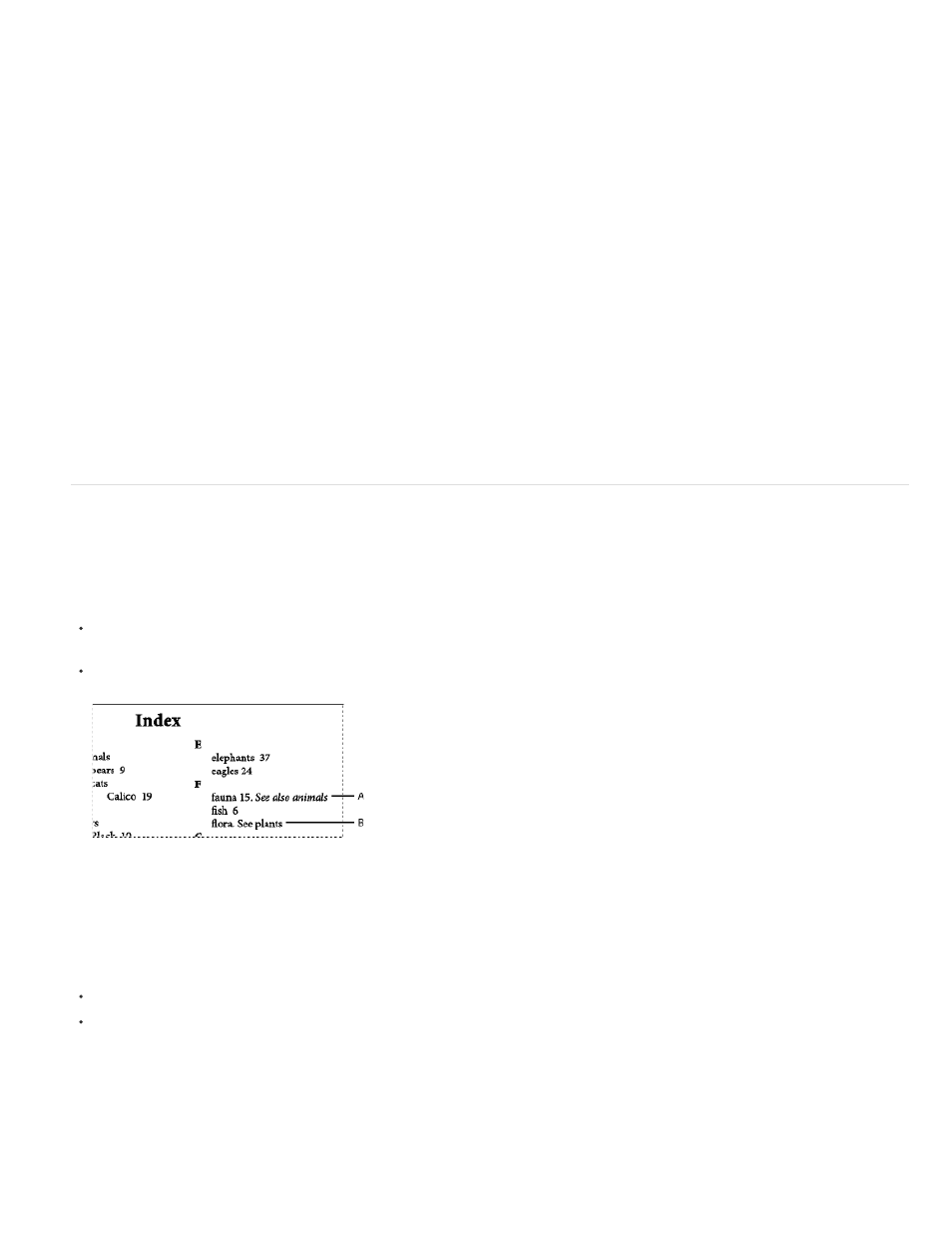Adobe InDesign User Manual
Page 197

To Next Style Change
To Next Use Of Style
To End Of Story
To End Of Document
To End Of Section
For Next # Of Paragraphs
For Next # Of Pages
Suppress Page Range
The page range extends from the index marker to the next change of paragraph style.
The page range extends from the index marker to the page where the next occurrence of the paragraph style specified in
the adjacent paragraph style pop-up menu appears.
The page range extends from the index marker to the end of the current thread of text frames that contain text.
The page range extends from the index marker to the end of the document.
The page range extends from the index marker to the end of the current section as defined in the Pages panel. (See
Document numbering options.)
The page range extends from the index marker to the end of the number of paragraphs specified in the adjacent box,
or to the end of as many paragraphs as exist.
The page range extends from the index marker to the end of the number of pages specified in the adjacent box, or to the
end of as many pages as exist.
Turn off page range.
Add “See” or “See also” cross-references to an index
Cross-references are index entries that point to related entries, instead of a page number. You create cross-references using the Index panel.
Cross-references can serve different purposes in an index:
Cross-references associate common terms with equivalents used in your document or book. For example, Fauna. See Animals. Entries with
such cross-references do not contain page references; they simply point to equivalent terms that are indexed more fully.
Cross-references point to other entries related to, but not equivalent to, a topic. For example, Cats. See also Wildcats. In this case, the index
entry containing the cross-reference also contains page numbers and/or subentries that are directly related to the entry’s topic.
Two types of cross-references
A.Cross-reference to related information (See also)B.Cross-reference to an equivalent term (See)
When you create a cross-reference in InDesign, you can also select a cross-reference prefix. “See” and “See also” are static text. When you
choose “See [also],” InDesign automatically assigns the correct prefix to the cross-reference each time the index is generated:
Entries with page numbers, subentries, or both are given “See also.”
Entries without page numbers or subentries are given “See.”
Using the “See [also]” option frees you from the task of manually updating cross-references as the contents of your index entries change.
1. Choose Window > Type & Tables > Index.
2. Select Reference.
192
